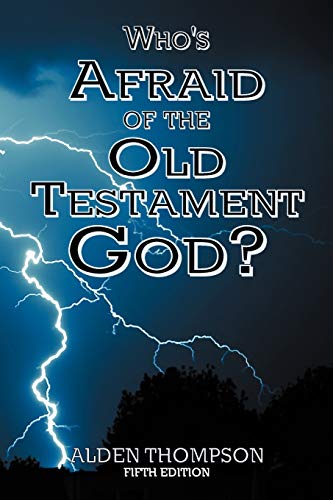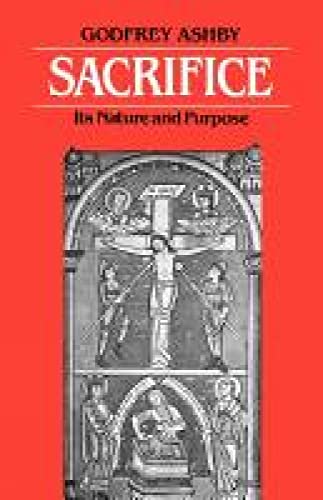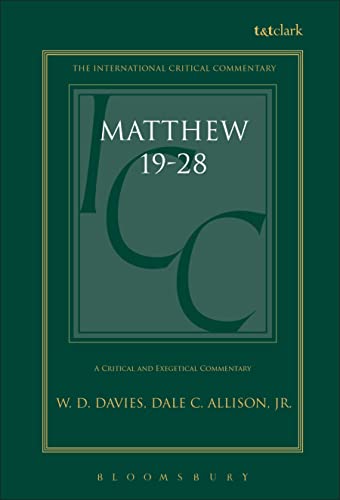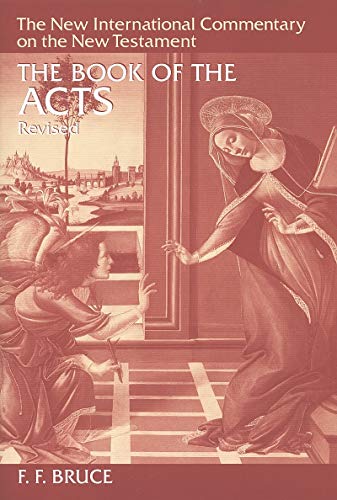Volume 16 - Issue 2
A survey of OT articles 1989–1990
By Martin J. SelmanWith this survey of OT articles, Martin Selman lays down his responsibility as Assistant Editor and we express our gratitude for his help in recent years. We are glad that John Bimson has agreed to take his place on the panel, with responsibility for the OT. Dr Bimson teaches at Trinity College, Bristol, England, and contributed a major article on the origins of Israel in issue 15.1.
If changes in trends can be discerned since the last article under this title was written just over two years ago (Themelios 13.3 (1988), pp. 94–95), one does at least gain the impression that journal articles in the OT field are increasing in both vitality and variety. Though it remains true that OT scholars still seem to communicate mainly with each other, the use of different (and potentially more fruitful) methods and approaches to the OT continues to develop, and there is evidence that wider topics dealing with the nature and appeal of the OT are being addressed. The result is a creativity which is sometimes provocative and often stimulating, but which also constitutes an invitation for evangelicals to make their voices heard not only in traditional areas of debate but to take the opportunity to strike out in new directions.
A number of articles have addressed the most fundamental question of all, namely, how should we interpret the OT? One of the most interesting of these, despite being expressed in rather turgid technicalese and advocating a questionable relativistic approach to interpretation, is E.F. Fiorenza’s appeal for OT scholarship to show more concern for the public dimensions and ethical implications of the OT (‘The ethics of biblical interpretation: de-centering biblical scholarship’, JBL 107 (1988), pp. 3–17). A different kind of debate concerns the continuing disquiet in the churches and in some areas of biblical scholarship at the low esteem given to the theological dimension of OT study. A spirited and somewhat surprising defence of the theological interests of modern OT scholarship has come from James Barr, who argues that ‘the theological sense is at the centre of the critical commentary’ (‘The literal, the allegorical, and modern scholarship’, JSOT 44 (1989), pp. 3–17). A further surprise is Barr’s attempt to trace a line of development from ancient allegorical approaches to modern theological interpretation. This view has been rightly criticized by B.S. Childs’ ‘Critical reflections on James Barr’s understanding of the literal and the allegorical’ in JSOT 46 (1990), pp. 3–9, but the debate will certainly continue. One helpful assessment of the issue is by J. Barton, ‘Should OT study be more theological?’, ExpT100/12 (1989), pp. 443–448, who argues that biblical scholars and theologians need a sense of the unity of all knowledge, and that the chief danger is a false separation between different types of biblical study. The question of how far evangelical scholars are involved in this debate is also an important one. Barr puts it very starkly: ‘the conservative impulse has never produced anything worthwhile in biblical theology’. Presumably Themelios readers will wish to make an appropriate response! It is not likely to be a unified response, however, for according to G. Fackre, there are at least six varieties of evangelical hermeneutics (‘Evangelical hermeneutics: commonality and diversity’, Int 43 (1989), pp. 117–129). This fascinating article surveys the whole range from fundamentalist approaches to those of liberal evangelicals.
One approach to OT interpretation that has gained popularity in recent years is that of inner-biblical exegesis. A good example is T.B. Dozeman’s investigation into the function of two passages whose relationship with each other is already well known, viz. Joel 2:13 and Jonah 4:2 (‘Inner-biblical interpretation of Yahweh’s gracious and compassionate character’, JBL 108 (1989), pp. 207–223). This fruitful article suggests that each passage in its different way interprets a central passage in the Torah (Ex. 32–34), and that Yahweh’s grace and covenant renewal have direct implications for the nations as well as for Israel.
Another now well-established trend is that by which a text is treated as a whole rather than a collection from various sources. An interesting example of this is the suggestion of R. Rendtorff, a German scholar who in recent years has developed a new approach to the question of Pentateuchal origins, that the first two books of the OT might be interpreted together (‘ “Covenant” as a structuring concept in Genesis and Exodus’, JBL108 (1989), pp. 385–393). Noticing that Genesis 1–11 and Exodus 19–34 exhibit a parallel structure, he argues that covenant is the key idea in both Genesis and Exodus. The article also makes some interesting comments on the theology of covenant. A different but equally significant approach to the structure of Genesis 1–11 is developed by R.S. Hess (‘Genesis 1–2 in its literary context’, TB 41.1 (1990), pp. 143–153). On the basis of a study of the genealogies in Genesis 1–11, he argues that the practice of bringing together doublets on the same subject is well established, and that Genesis 1–2 is a cohesive unit containing a dual account of creation, and is not the result of unsystematic editing.
Similar issues relating to the book of Isaiah are also under current discussion. The attempt to interpret Isaiah as a whole continues to be presented with some vigour. C.A. Evans has revived and renewed Brownlee’s interesting hypothesis that the book is to be understood in two parallel volumes, viz. chapters 1–33 and 34–66 (‘The unity and parallel structure of Isaiah’, VT 38 (1988), pp. 129–147). Another approach is that of R.E. Watts, who has given fresh consideration to the role of chapters 40–55 within the context of the whole book (‘Consolation or confrontation?: Isaiah 40–55 and the delay of the new exodus’, TB 41.1 (1990), pp. 31–59). Noticing that the theme of judgment continues from 1–39 into 40–48, he argues that 49–55 explains the failure of the return from exile and announces that the new exodus is to be postponed. Chapters 56–66 then constitute a fresh appeal for Israel to prepare herself for this future work of God, which will be the work of the servant. Watts’ proposals tie in with suggestions from other recent commentators on Isaiah that the idea of servanthood is central to the book (cf. the commentary by J. Oswalt, Eerdmans, 1986). The same thesis has now been applied in detail to Isaiah 56–66 by W.A.M. Beuken (‘The main theme of Trito-Isaiah: “The Servants of Yahweh” ’, JSOT 47 (1990), pp. 67–87). A further variation on the theme appears in a suggestive article by J.F.A. Sawyer, who has shown how the male imagery associated with the Servant should be understood alongside the description of the female Daughter of Zion (‘Daughter of Zion and Servant of the Lord in Isaiah: a comparison’, JSOT 44 (1989), pp. 89–107). Both articles illustrate the value of a thematic approach to OT interpretation, demonstrating in particular the constructive nature of much recent work on Isaiah.
An important area where interest has been recently revived is that of the kingdom of God in the OT. An essay by D. Patrick under that title (in W. Willis (ed.), The kingdom of God in twentieth-century interpretation(Peabody, Mass., 1987), pp. 67–79) suggested that the kingdom of God was not as peripheral an idea in the OT as many believed, but a comprehensive OT scheme to be found in every area of the OT canon, and from which the teaching of Jesus was a natural development. The idea was developed independently by M.J. Selman in an article also entitled ‘The kingdom of God in the Old Testament’ (TB 40.2 (1989), pp. 161–183). The concept of the kingdom of God was traced from early passages such as Exodus 19:6 through the Psalms and prophets, to its main focus in the post-exilic literature, primarily in Daniel and Chronicles. It emerged clearly that the notion of the kingdom of God as a living present reality predominated over the idea of a kingdom that was still to come. A major influence in the development of the kingdom were two Psalms, 45 and 145. The latter has been very helpfully analysed by B. Lindars, who shows that its basic theme is the kingdom of God, and that it is structured around verse 13 (‘The structure of Psalm 145’, VT 39 (1989), pp. 23–30).
A different theme to which a series of brief articles has been devoted in ExpT is that of the poor. The first in the series was that of R.J. Coggins (‘The OT and the poor’, ExpT 99/1 (1987), pp. 11–14), who briefly surveyed the OT material. This survey was broadened and deepened in several articles, by J.E. Weir (ExpT100/1 (1988), pp. 13–15), S. Gillingham (ExpT 100/1 (1988), pp. 15–19) and R.N. Whybray (ExpT 100/9 (1989), pp. 332–336), while T.R. Hobbs raised some very helpful questions about method in ‘Reflections on “The Poor” and the OT’ (ExpT 100/8 (1989), pp. 291–294). At least these contributions demonstrate the sensitivity of some OT scholars to the OT’s significance for issues of contemporary concern.
A more traditional dimension of OT study is that of biblical archaeology. Though the subject is often ignored by many students of the Bible, it has an important function in its own right, and continues to demonstrate its own vitality. Two areas are worthy of note in recent writing. Firstly, a recent issue of BA is devoted to a new area of biblical archaeology, viz. nautical archaeology (BA 53/1 (1990), pp. 1–60). Though the subject is still in its infancy, it is clear from discoveries in both the Sea of Galilee and the Mediterranean that biblical interpretation is being affected significantly by this kind of information (for a specific example relating to the site of Ezion-Geber, see A. Flinder, ‘Is this Solomon’s seaport?’, BARev 15 (1989), pp. 30–43). Secondly, two articles in the area of early Hebrew inscriptions have special relevance for the text of the OT. A re-examination of what has been claimed as ‘the oldest Bible text’, viz. two inscribed silver plates containing a form of the priestly blessing of Numbers 6:24–26 found in Jerusalem and dating to the seventh centuryBC (M.C.A. Korpel, ‘The poetic structure of the Priestly Blessing’, JSOT 45 (1989), pp. 3–13), has confirmed that it shares the same basic structure as the biblical version and is an acceptable variant of it. The second example is an eighth-century jasper seal, published originally in 1983, and renewed study has shown that it contains the tetragrammaton on both obverse and reverse as part of a personal name (‘An eighth-century “first”: God’s name found on a Hebrew seal’, BRev 5 (4, 1989), p. 31). Though both these discoveries are small, they make a significant contribution to the view that the biblical text is both ancient and reliable.
Abbreviations
BA Biblical Archaeologist
BRev Bible Review
BARev Biblical Archaeology Review
ExpT Expository Times
Int Interpretation
JSOT Journal for the Study of the Old Testament
JBL Journal of Biblical Literature
TB Tyndale Bulletin
VT Vetus Testamentum
Martin J. Selman
Spurgeon’s College, London






